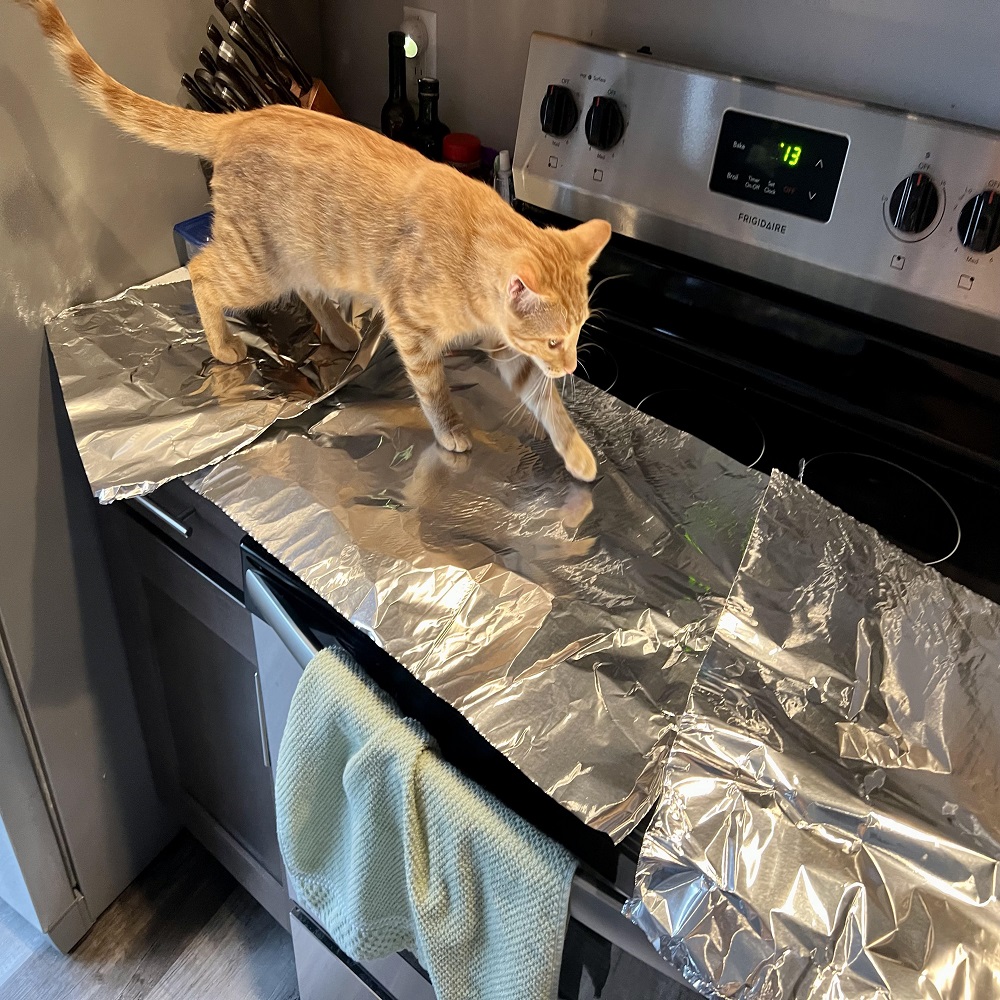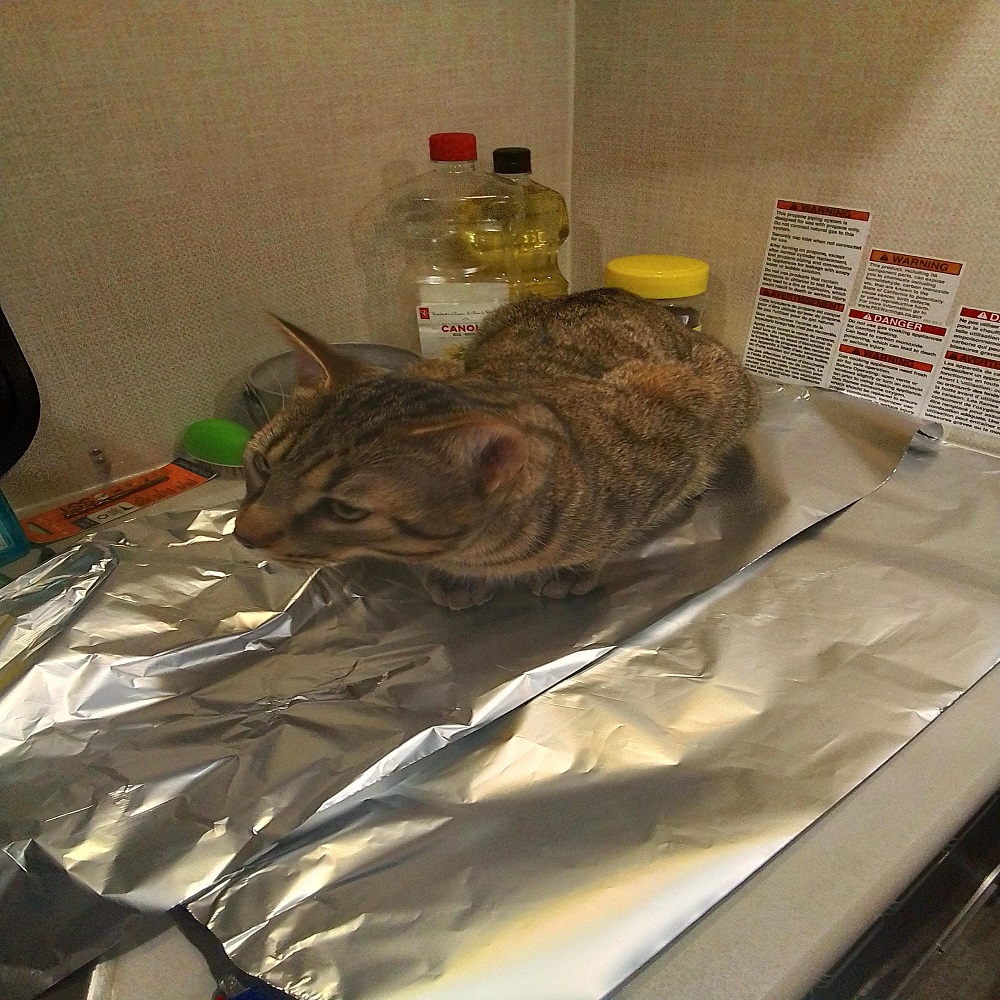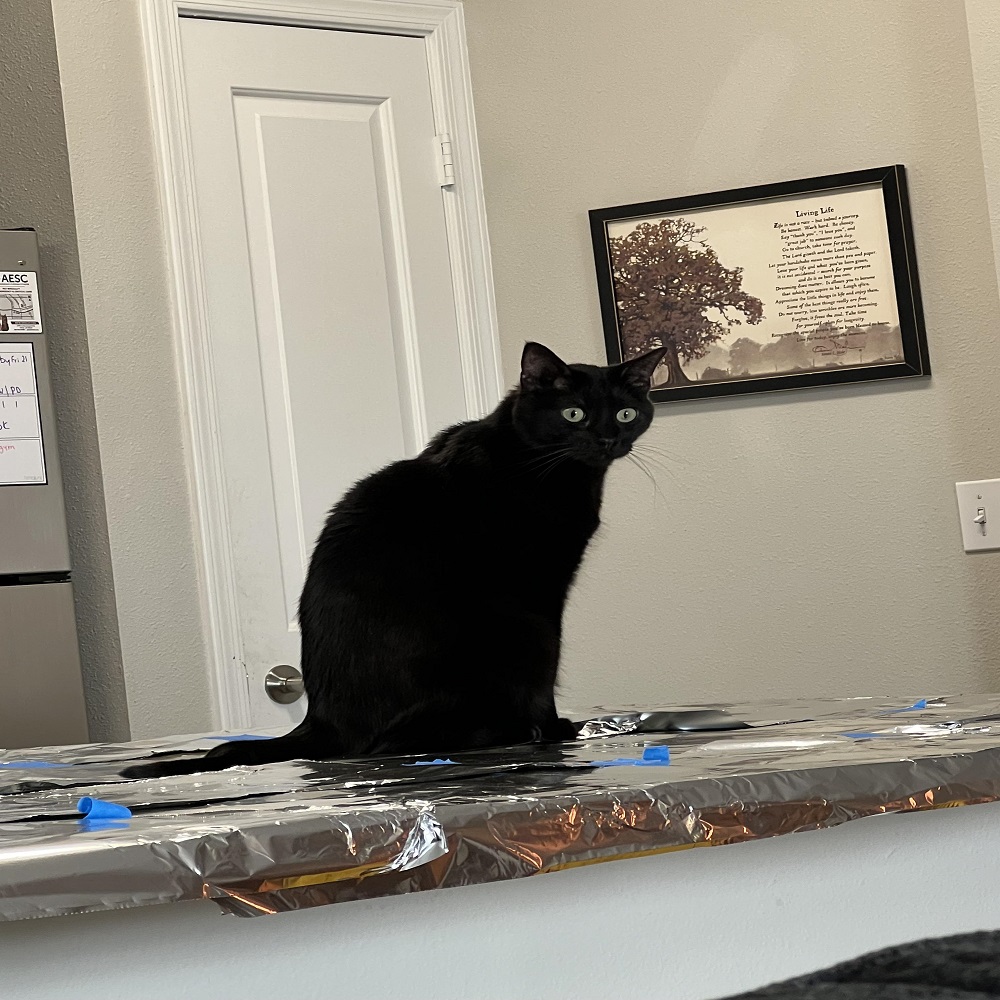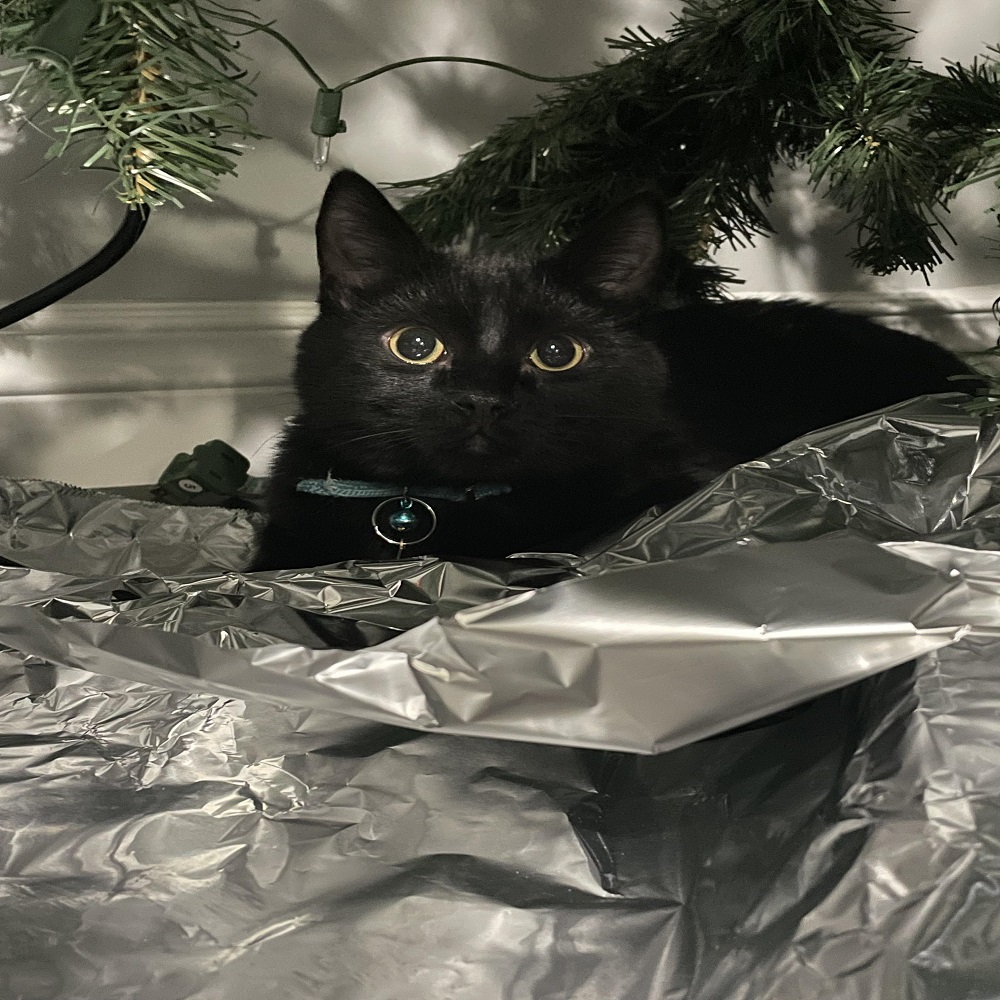Introduction
Cats are notoriously curious creatures, but they can be surprisingly averse to certain objects. One such object is tin foil. If you’ve ever observed a cat’s reaction to tin foil, you might have noticed that they tend to avoid it, sometimes even with an exaggerated response. But why is this? To understand this behavior, it’s essential to explore the sensory sensitivities of cats, their evolutionary instincts, and their unique interactions with everyday objects.
Sensory Sensitivities
Cats have highly developed senses that significantly influence their behavior. Their acute hearing, sense of smell, and touch make them particularly sensitive to their environment.
- Auditory Sensitivity: Cats have an extraordinary sense of hearing, capable of detecting frequencies as high as 64,000 Hz. Tin foil produces a distinctive crinkling sound when manipulated, which can be jarring to a cat’s sensitive ears. The sharp, high-pitched noise of tin foil might be perceived as startling or uncomfortable, leading them to avoid the noise altogether.
- Tactile Sensitivity: The texture of tin foil is another factor. When a cat’s paws come into contact with tin foil, the crinkly, slippery surface can feel unusual and unsettling. Cats use their paws to explore their surroundings, and the unfamiliar texture of tin foil can cause discomfort or confusion.
- Olfactory Sensitivity: While tin foil itself doesn’t have a strong odor, cats’ keen sense of smell might detect residual scents from manufacturing or handling. This subtle olfactory information can contribute to their avoidance behavior, as cats are sensitive to unfamiliar smells.
Evolutionary Instincts
Cats are predators and have evolved to be highly alert to their surroundings to detect potential threats. This instinct influences their behavior towards unusual or unfamiliar objects.
- Instinctual Caution: In the wild, cats have learned to be cautious about objects and situations that could potentially pose a threat. Tin foil, with its reflective surface and unfamiliar sound, might be interpreted as a potential danger. This evolutionary wariness makes cats more likely to avoid it as a precautionary measure.
- Reflective Surfaces: Cats are often intrigued by reflective surfaces, but they can also be wary of them. The shiny surface of tin foil reflects light in a way that might create visual stimuli that cats are not used to, triggering their instinct to be cautious and avoid the unfamiliar.
 Behavioral Reactions
Behavioral Reactions
The way cats react to tin foil can vary, but common behaviors include avoidance, startling, and agitation.
- Avoidance: Many cats will avoid walking on or near tin foil. The unusual sound and texture can be enough to deter them from approaching it. Cats are creatures of habit, and an unexpected change in their environment, like the presence of tin foil, can lead them to steer clear of it.
- Startling: The sudden noise made by tin foil when it is crinkled can startle cats. This startle response is a natural reaction to something that disrupts their environment. The crinkling sound might mimic the noise of potential threats or prey, triggering a flight response.
- Agitation: In some cases, a cat might become visibly agitated or distressed by tin foil. They might scratch at it, try to bat it away, or even hiss and growl. This reaction is part of their effort to remove or neutralize what they perceive as an intruding or dangerous object.
Practical Implications
Understanding why cats avoid tin foil can be useful in various situations:
- Training and Behavior Modification: If you’re using tin foil as a deterrent for unwanted behavior (such as keeping cats off counters), be mindful of its potential to cause distress. Consider using alternative deterrents that are less likely to cause discomfort.
- Safe Exploration: If you want to encourage your cat to explore new textures or sounds in a safe and controlled manner, introduce them gradually to new stimuli. Avoid sudden or harsh experiences that might cause fear or anxiety.
- Environmental Enrichment: To stimulate and entertain your cat, provide a variety of safe, engaging toys and environments. Interactive toys and puzzle feeders can offer mental and physical stimulation without the stress associated with tin foil.
Sensory Sensitivities
Cats possess an array of highly developed senses that play a crucial role in their interactions with the environment. Their sensitivity to auditory, tactile, and olfactory stimuli significantly influences their reactions to objects like tin foil.
Auditory Sensitivity
Cats have an exceptional sense of hearing. They can detect sound frequencies ranging from 48 Hz to 64,000 Hz, which is far beyond the human range of hearing. Tin foil produces a distinctive crinkling sound when manipulated, a noise that can be quite startling to a cat’s sensitive ears. This sound is characterized by its high pitch and sharp, intermittent nature. For a cat, this can be perceived as a potential threat or an anomaly in their environment, prompting them to avoid it as a precaution.
Tactile Sensitivity
The texture of tin foil is another significant factor. When a cat’s paws come into contact with tin foil, they encounter an unusual, crinkly surface that can feel foreign and unsettling. Cats use their paws not only for walking but also for exploring their surroundings and manipulating objects. The slippery and irregular texture of tin foil contrasts sharply with more familiar surfaces, potentially causing discomfort or confusion.
Olfactory Sensitivity
While tin foil itself does not have a strong odor, cats have an acute sense of smell that can detect subtle scents. Any residual odors from manufacturing or handling processes may be perceptible to a cat. This olfactory sensitivity can contribute to their aversion, as cats are sensitive to unfamiliar smells and may react negatively to them.
Evolutionary Instincts
Understanding a cat’s reaction to tin foil also involves examining their evolutionary instincts. Cats are natural predators with a keen awareness of their environment. Their behavior towards unfamiliar objects is influenced by instincts honed over millennia.
Instinctual Caution
In the wild, cats have developed a heightened sense of caution towards anything that could pose a threat. Tin foil’s reflective surface and unfamiliar sound might be interpreted as potential danger. This instinctual wariness encourages cats to avoid anything that deviates from their normal environment, helping them stay safe from predators and environmental hazards.
Reflective Surfaces
Cats are often intrigued by reflective surfaces, such as mirrors or shiny objects. However, these reflections can also be disorienting or alarming. The shiny surface of tin foil reflects light in an unpredictable manner, creating visual stimuli that can be unsettling for a cat. The reflection can also mimic the appearance of movement, which might be perceived as a threat or an unusual anomaly.
 Behavioral Reactions
Behavioral Reactions
Cats’ reactions to tin foil can vary, but common behaviors include avoidance, startling, and agitation. These reactions provide insight into how they process and respond to the stimuli presented by tin foil.
Avoidance
Many cats will instinctively avoid walking on or near tin foil. The combination of unusual sound and texture can be enough to deter them from approaching it. This avoidance behavior is a natural response to anything that disrupts their familiar environment.
Startling
The crinkling noise of tin foil can startle cats, triggering a flight response. This sudden noise might mimic the sound of potential threats or prey, causing a cat to react defensively. Startling noises can provoke a range of responses, from jumping and running away to cautious observation.
Agitation
In some cases, cats might exhibit signs of agitation or distress in response to tin foil. They might scratch at it, try to bat it away, or even hiss and growl. This behavior reflects their effort to deal with or neutralize what they perceive as an intruding or dangerous object.
Practical Implications
Understanding why cats avoid tin foil can have practical implications for cat owners and those interested in feline behavior.
Training and Behavior Modification
If tin foil is being used as a deterrent for unwanted behavior (such as keeping cats off counters), it’s essential to consider its potential to cause distress. There are alternative deterrents that might be less likely to cause discomfort while still being effective.
Safe Exploration
Encouraging cats to explore new textures or sounds in a controlled manner can be beneficial. Gradual introduction to new stimuli, rather than sudden exposure, can help prevent fear or anxiety. Safe and positive experiences are key to helping cats adapt to changes in their environment.
Environmental Enrichment
Providing a variety of safe, engaging toys and environments can help stimulate and entertain cats. Interactive toys, puzzle feeders, and climbing structures can offer mental and physical stimulation without the negative effects associated with tin foil.
Conclusion
Cats’ aversion to tin foil can be attributed to their sensory sensitivities, evolutionary instincts, and behavioral responses. Understanding these factors provides insight into their unique reactions and can help in creating a more comfortable and stimulating environment for your feline friend. By acknowledging their sensory experiences and natural instincts, you can better accommodate their needs and foster a more harmonious relationship.


